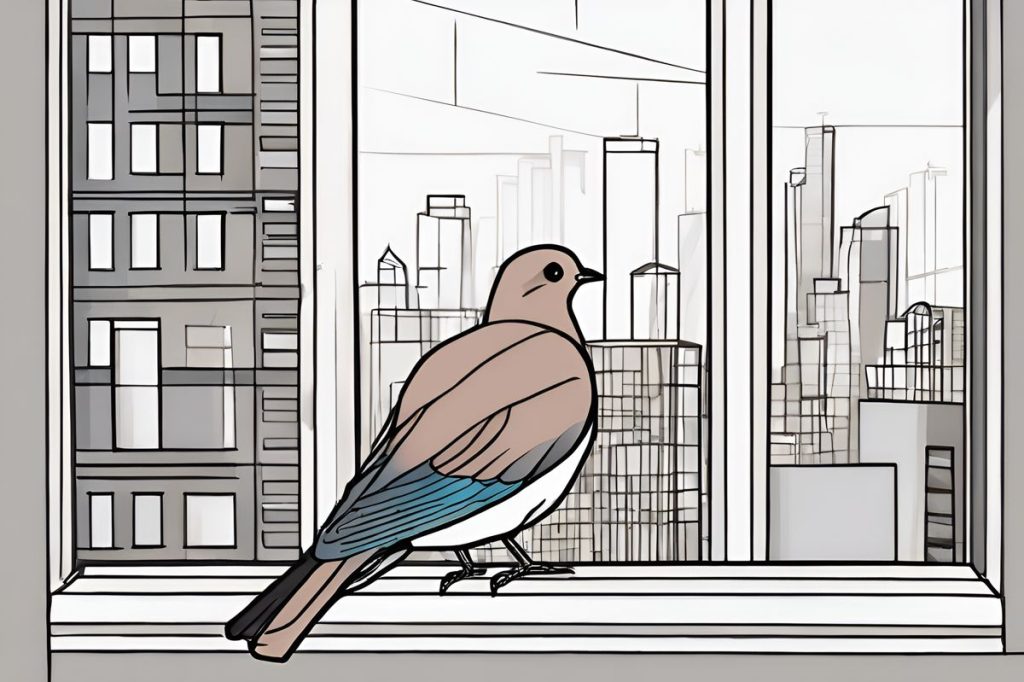In cities around the world, the Laughing Dove, with its cheerful pink feathers and distinctive chuckling call, is rapidly thriving amid urban life by nesting in plant pots and windowsills. Originally released by hunters, these adaptable birds are now outcompeting native species like collared doves, prompting conservationists to monitor their growing presence and its impact on local ecosystems.
Why is the Laughing Dove population increasing in urban areas?
Laughing doves are thriving in cities due to their adaptability to human disturbance and ability to nest in various urban spaces. Their high reproduction rates, year-round breeding, and minimalistic nesting contribute to their population growth, often leading to competition with native species. Conservation efforts are underway to monitor and manage their impact on local ecosystems.
Breeding in the City: The Laughing Dove’s Success Story
In the heart of bustling urban areas, a small bird known as the laughing dove is becoming increasingly common. This lilac pigeon with a cheerfully pink underside is easily recognizable by its distinctive chuckling call. The laughing dove has made its home among us, nesting in the most convenient of urban niches, from plant pots to windowsills. Their remarkable adaptation to city life has offered them a safe haven from natural predators, fostering their population growth.
The lack of shyness towards humans has turned these doves into competitors, pushing out native species. Their ability to construct nests almost anywhere, combined with their high reproduction rates, poses the question: will they eventually dominate urban avian communities? Only time will tell, as they still face the challenge of coexisting with larger pigeon species. Despite being a subject of curiosity for some city dwellers, the laughing dove’s expansion is a phenomenon that requires careful monitoring.
The Laughing Dove Invasion: An Unintended Consequence
Originally absent from local ecologies, the laughing dove’s presence in certain areas can be traced back to isolated incidents of illegal releases by hunters. Intended as quarry, these birds instead found sanctuary in the urban jungle, where they thrive. Their nesting habits are quite simple yet effective: they build minimalistic nests with a handful of twigs and lay a pair of eggs that hatch within two weeks.
Birdlife experts have noted a significant increase in the laughing dove population, often attributed to their high adaptability and year-round breeding capability. The preference for urban over rural settings has led to a decline in the numbers of native species such as collared doves and turtle doves. The limited availability of suitable habitats sparks a concern that this competition could result in the loss of indigenous avian species.
Urban Adaptation: The Laughing Dove’s Advantage
Laughing doves exhibit a remarkable resilience to human disturbance, an advantage that has facilitated their proliferation in urban settings. Their opportunistic nature allows them to exploit any available space for nesting, making them a familiar sight for many residents. The increase in their population is visible and has been confirmed by birdwatchers and experts who have witnessed the shift in urban bird dynamics.
Personal accounts from residents like Nikos, who despite his blindness, can identify the laughing dove by its unique call, attest to the bird’s rapid spread across urban centers. Over the past few years, the laughing dove’s presence has become a constant, with their distinctive laugh echoing through the city streets throughout the year.
Controlling the Population: Conservation Efforts
Recent decisions to allow the hunting of laughing doves aim to curb their impact on local species. Conservationists keep a vigilant eye on the situation, tracking population trends and advocating for measures that balance the ecosystem. Since the laughing dove was once considered an accidental visitor, its transition to a permanent resident and prolific breeder warrants a watchful approach to prevent any detrimental effects on native bird populations.
FAQ: The Rise of the Laughing Dove in Urban Landscapes
Why is the Laughing Dove population increasing in urban areas?
The Laughing Dove population is increasing in urban areas due to their remarkable adaptability to human environments. They can nest in a variety of locations, such as plant pots and windowsills, and have high reproduction rates, breeding year-round. These factors enable them to outcompete native species like collared doves, prompting conservationists to monitor their growing presence and its impact on local ecosystems.
How do Laughing Doves adapt to urban environments?
Laughing Doves adapt to urban environments through their opportunistic nesting habits and resilience to human disturbance. They can construct minimalistic nests almost anywhere using a few twigs, making them ideal for urban settings where traditional nesting sites may be scarce. Their lack of shyness towards humans further contributes to their thriving population amid city life.
What impact does the Laughing Dove have on native bird species?
The presence of Laughing Doves has led to a decline in native bird species, such as collared doves and turtle doves, due to competition for resources and nesting sites. Their high adaptability and reproduction rates allow them to dominate urban avian communities, raising concerns among conservationists about the long-term consequences for indigenous species and local ecosystems.
What conservation efforts are being implemented to manage the Laughing Dove population?
Conservationists are actively monitoring the Laughing Dove population and advocating for measures to balance the ecosystem. Recent decisions have allowed for regulated hunting of Laughing Doves in an effort to control their numbers and mitigate their impact on local bird species. Continuous tracking of population trends is essential to ensure that conservation efforts are effective and that native bird populations are protected.

